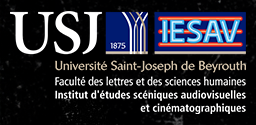Regards
Keywords
art, religion, Pier Paolo Pasolini, tolerance, open work, Islam, semiotics, otherness, Umberto Eco
Document Type
Article
Abstract
Based on two films – La Ricotta by Pier Paolo Pasolini and The Message by Mustapha Akkad – this paper examines the relationship between art and religion. At the core of this debate lies an opposition between two semiotic approaches, defined by Umberto Eco as in verbis and in factis. In dealing with works of art, I will highlight the connection between these two concepts and the idea of “The Open Work.” I will then argue that the conflict arises from a shift in the debate from aesthetics to politics, and thus revolves around a certain margin of tolerance and openness to otherness in its many forms. In the field of art, these forms are synonymous with renewal.
Résumé
Mon propos est d’analyser le rapport entre l’art et le religieux à travers deux films : La Ricotta de Pier Paolo Pasolini et Le Message de Mustapha Akkad. Il y aurait, au fond de ce débat, une opposition entre deux démarches sémiotiques qu’Umberto Eco formule en deux termes : « in verbis » et « in factis ». En analysant ces deux démarches, je mettrai l’accent sur les liens qu’elles entretiennent avec la notion de « l’œuvre ouverte » dès lors qu’il s’agit d’une œuvre d’art. Je démontrerai par la suite que le conflit naît à la faveur d’un déplacement du débat de l’esthétique au politique et, de ce fait, tourne autour d’une certaine marge de tolérance accordée à l’altérité dans ses formes les plus diverses. Celles-ci sont, dans le domaine de l’art, synonymes de nouveauté.
Recommended Citation
Mansouri, Hassouna
(2019)
"Iconoclasme, blasphème et liberté de l’Art,"
Regards: Vol. 21:
No.
21, Article 8.
Available at:
https://e-journals.usj.edu.lb/regards/vol21/iss21/8
Included in
Comparative Literature Commons, Creative Writing Commons, Film and Media Studies Commons, Fine Arts Commons, Theatre and Performance Studies Commons


